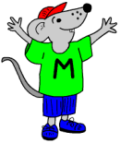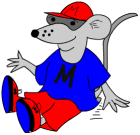Free Y3 maths worksheets: Finding pairs to make 19 and 20
 The second of these pages should probably be covered first; that is finding a pair of numbers that make 20. These types of question should follow on once children are confident and knowledgeable about finding pairs that make 10. These should be known. Progressing to finding pairs to make 20 should then be relatively simple.
The second of these pages should probably be covered first; that is finding a pair of numbers that make 20. These types of question should follow on once children are confident and knowledgeable about finding pairs that make 10. These should be known. Progressing to finding pairs to make 20 should then be relatively simple.
If it is known that 4 + 6 make 10 then it is easy to work out what needs to be added to 14 to make 20.
Working out pairs that make 19 will often be done by ‘adding on’. For example;
What needs to be added to 7 to make 19?
Add 10 to 7 to make 17, then add two more by counting on to 19.
it can also be done by adding 2 to 7 to make 9 and then adding 10.
Don’t forget to ask your child what approach they took to reach the answer as both are equally valid.
Free Y3 maths worksheet: Make 19
Free Y3 maths worksheet: Make 20
 As it is half term week for most children in the UK we can have a break from the serious stuff and give you some maths puzzles and word searches to do with maths. This one is just for the numbers from zero to ten. Good practice at recognising and spelling these essential words.
As it is half term week for most children in the UK we can have a break from the serious stuff and give you some maths puzzles and word searches to do with maths. This one is just for the numbers from zero to ten. Good practice at recognising and spelling these essential words. Doubling and halving can be a very effective way of working out quite difficult number problems in your head. These two free maths worksheets look at this skill.
Doubling and halving can be a very effective way of working out quite difficult number problems in your head. These two free maths worksheets look at this skill. A couple of free maths worksheets for older children in primary school. They will need to have a good idea of time, a calculator handy and a pretty good mathematical brain to answer these questions. There is usually more than one way to tackle problems such as these and it is worthwhile discussing with your child why they are taking a particular approach.
A couple of free maths worksheets for older children in primary school. They will need to have a good idea of time, a calculator handy and a pretty good mathematical brain to answer these questions. There is usually more than one way to tackle problems such as these and it is worthwhile discussing with your child why they are taking a particular approach.